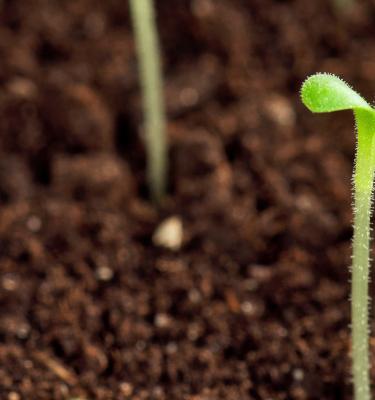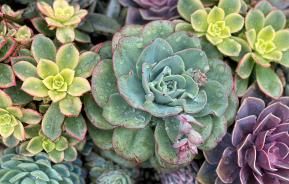Hardy annual flower seeds and seeds of many vegetables and salad crops can be sown directly outdoors in garden soil where they are to grow to maturity.
Popular hardy annual flowers include alyssum, calendula, candytuft, chrysanthemum, convolvulus, delphinium, Californian poppy, godetia, gypsophila, helichrysum, larkspur, lavatera, limnathes, linaria, nasturtium, love-in-a-mist, clary, scabious and sunflower.
Hardy vegetable seed that can be sown where it is to crop include salad crops, the root vegetables that don’t like transplanting such as carrots, parsnips, beetroot, radish and salsify. Peas, broad beans and spinach are also sown in positions where they are to crop.
But many of these vegetables can also be sown in containers indoors and the young seedlings transplanted where they are to crop if you want to start them earlier in the year and produce an earlier crop.
Getting The Best Results
- Clear any weeds before you start with a weedkiller such as Weedol 2 that allows immediate sowing of seeds.
- Prepare the soil so that it is broken down into fine crumbs on the surface. Enrich the soil with compost and slow-release plant food.
- Sow seeds at the right time. The seed packet will tell you the approximate time, but the weather and soil conditions in your garden will guide you precisely. Seeds will only germinate when it’s warm enough - most seeds won’t germinate below a soil temperature of 7°C/45°F. Fresh weed growth will indicate when this time has arrived.
- Use the side of a rake or a bamboo cane to make a shallow V-shaped drill (trench) in the soil surface about 1.3 - 2.5cm (1/2 - 1in) deep; the depth will depend on the plants being grown - check the actual depth on the seed packet. Check to see that the soil at the bottom of this straight row is moist. If it’s not then get watering.
- Sow fine seeds thinly as recommended on the packet, then fill in the drill with soil. Large seeds of broad beans and peas are sown in wide drills and positioned individually.
- Lightly press down the soil over the seeds and gently firm the surface - don’t water.
Thinning Out
If you’ve sown the seed too thickly, you may have to carefully thin out the seedlings to leave them at the recommended spacing.








